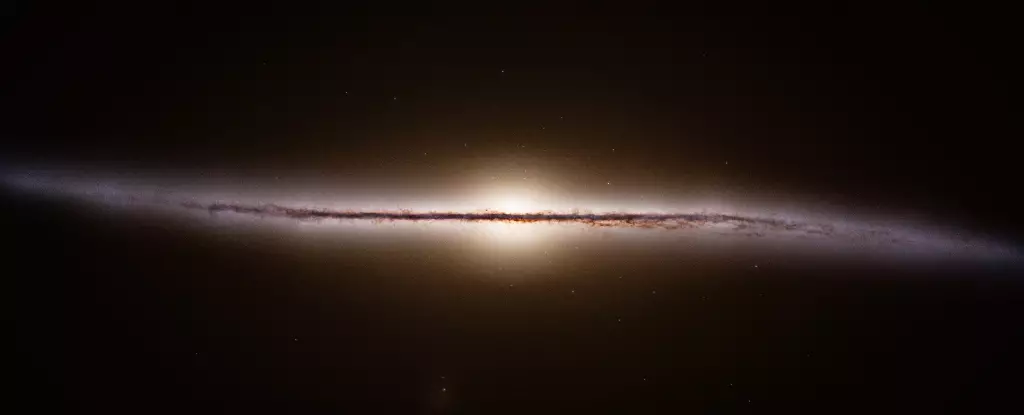The evolution of our understanding of the cosmos is often marked by leaps made through scientific inquiry, where major discoveries catalyze shifts in long-held beliefs. The European Space Agency’s Gaia mission stands as a monumental endeavor in this context, fundamentally enhancing our comprehension of the Milky Way galaxy. With its groundbreaking contributions, Gaia has not merely built upon pre-existing knowledge but has enshrined itself as a pivotal element in the modern astronomical lexicon, and its legacy reverberates in today’s research and discussions.
Before Gaia, our methods for mapping the Milky Way were largely deterministic and somewhat speculative. We operated with fragmented models solicited from radio observations and the movements of variable stars, such as RR Lyrae and Cepheids, which acted as “standard candles” for measuring distance. These early methods revealed a rudimentary structure, hinting at the galaxy’s spiral arms and the considerable complexities within. However, despite the insights gained from the groundwork laid by radio astronomy and the earlier Hipparcos mission, these traditional methodologies often necessitated broad assumptions based on some observed variables.
Enter Gaia, which was launched in 2013 with an audacious mandate: To craft a comprehensive, three-dimensional map of the Milky Way by collecting a staggering three trillion measurements spanning over billions of stars. The Precision in distance measurement and stellar motion essentially redefined galactic mapping. Rather than housing a static topological depiction of our galaxy, Gaia’s data conveys a dynamic life story, illustrating not merely the structure but also the history of stellar motion and interaction. The three-dimensionality of this map has unveiled nuanced features of the galaxy, revealing its intricate structure and allowing astronomers to track the past motion of stars and clusters through time.
With the sheer volume of data harvested during the Gaia mission, astronomers have been able to explore previously unknown facets of the Milky Way. The observations made by Gaia established the existence of previously unrecognized structures within the galaxy’s spiral arms, including potential remnants from galactic interactions or significant tidal events. Understanding these features is crucial not only for mapping the present structure but also for exploring the evolutionary history of the Milky Way.
Additionally, the mission encouraged extensive discussions on galactic dynamics. Recent interpretations suggest that the Sagittarius Dwarf Spheroidal galaxy may have played a pivotal role in shaping the galactic features we observe today. This discovery exemplifies how an expansive inquiry can lead to exciting new theories and provocations regarding our cosmic neighborhood.
Perhaps one of the most visually striking outcomes of the Gaia mission has been the marriage of data with artistry, leading to exceptionally vivid representations of the galaxy. These artist impressions, rooted in the rigorous scientific data collected, allow the public and scientific community alike to visualize the complexities of our celestial home with previously unseen clarity. Illustrative renditions from Gaia have not only challenged earlier conceptions of the Milky Way but have also facilitated a deeper public engagement with astronomy, underlining science’s interplay with creativity.
Moreover, the depiction of galactic features—including the delicate wavy structure of the galactic disk—has revitalized our cinematic perspective of the Milky Way. By seeing our galaxy from the side, viewers gain awareness of its layered configuration and stellar populations presented in striking juxtaposition against a cosmic backdrop.
As we draw closer to the conclusion of Gaia’s mission, it’s important to acknowledge the extraordinary richness of the data it has generated. While the mission’s official operations may be ending, it carries immense anticipatory weight with its final data release scheduled for 2030. The scientific community is poised on the brink of a galactic renaissance, bracing for the potential revelations that could stem from this extensive data trove. Will Gaia’s observations unveil more secret histories of stellar formations or interactions?
In contemplating the legacy of the Gaia mission, it is indisputable that it has transmuted our understanding of the Milky Way. Through the merging of data and interpretation, Gaia has bolstered our knowledge of cosmic structures and their historical narratives. Even as we navigate the uncharted waters of future discoveries, the values unearthed by Gaia will endure, propelling humanity further into the mysteries of our celestial domain. The mission has established a foundation of knowledge that will invariably inspire a new generation of astronomers and enthusiasts drawn to the wonders of our galaxy.


Leave a Reply